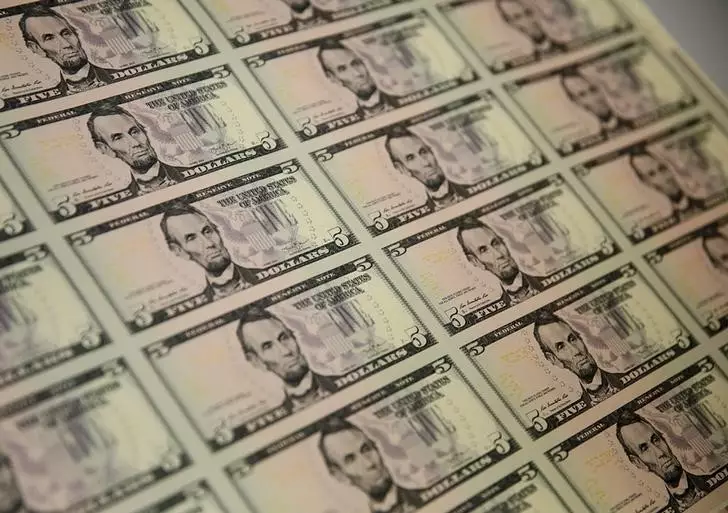The U.S. Dollar: Navigating Rate Changes and Economic Indicators

The U.S. dollar recently exhibited volatility, experiencing a slight decline after a significant rebound that surprised many market participants. This decline comes in the wake of aggressive measures by the Federal Reserve, particularly a notable reduction in interest rates. As of the latest data, the Dollar Index, which measures the value of the dollar against a basket of six major currencies, slipped by 0.1%, settling at approximately 100.565, following its most substantial single-day surge since early June.
Notably, this market movement raises questions about the strength and stability of the dollar, particularly in a climate where traders are keenly evaluating how aggressive the Federal Reserve’s approach to rate cuts will be in the coming months. The recent 50 basis-point decrease marked the beginning of what analysts perceive as a potentially elongated easing cycle. However, the inconsistency in messages from different Federal Reserve officials contributes to uncertainty among traders. While some Fed members herald the recent cuts as necessary, others advocate for a more measured approach, suggesting a complex landscape for the dollar’s performance going forward.
The upcoming speeches from key members of the Federal Reserve this Thursday are anticipated to provide insight into the bank’s current policy direction. With prominent figures such as Chair Jerome Powell, along with governors like Adriana Kugler and Michelle Bowman, all scheduled to address the market, traders are eager for clarity. The mixed messages regarding rate cuts signal that the Fed is still navigating its strategy in response to evolving economic conditions.
The variance in opinion among Fed officials could contribute to market hesitancy. Governor Kugler’s strong endorsement of the recent cuts stands in stark contrast to Governor Bowman’s caution against aggressive reductions. Furthermore, Atlanta Fed President Raphael Bostic’s remarks about the need for a more patient approach further complicate the narrative. As analysts from ING have noted, the comments from these officials might lead to “extra color” on the Dot Plot submissions, indicating a divergence of outlooks about future rate paths.
Economic Data and Its Implications
Beyond the speeches from the Fed, the economic data scheduled for release offers further context for understanding the dollar’s movement. Investors should closely monitor indicators such as the second-quarter GDP figures, weekly jobless claims, and August’s durable goods orders. These metrics will not only inform the Fed’s future decisions but also shape trader sentiment towards the dollar.
In Europe, the euro’s slight uptick against the dollar reflects a broader struggle across major currencies as the economy attempts to stabilize. Following a pronounced rally earlier in the month, the EUR/USD trading at around 1.1132 suggests a narrowing range amidst fluctuating data from the U.S, which could foster significant shifts in the near term.
Meanwhile, the British pound had a muted rise, showing resilience by trading at 1.3342 after reaching levels not seen since February 2022, indicating confidence despite broader global economic concerns. This performance sets the stage for potential continued strength against the dollar.
In addition to U.S. and European dynamics, global forces are also shaping currency movements. The Swiss National Bank’s recent decision to lower its benchmark interest rate reflects underlying economic pressures, with the Swiss franc now at 0.8488 against the dollar. This is noteworthy as it indicates that inflation remains a concern globally, even though it is moderated compared to other major economies.
Other markets also tell distinct stories; for instance, the Chinese yuan has depreciated modestly against the dollar amid government stimulus aimed at revitalizing growth. The current exchange rate reflects the challenges in balancing economic growth with currency stability. Furthermore, the anticipation of leadership shifts in Japan adds another layer of complexity, as changes in government could affect the Bank of Japan’s monetary policy, further stabilizing or destabilizing the yen in its interactions with the dollar.
Navigating the current economic climate is a challenge for the U.S. dollar as various forces interact within the market ecosystem. The balancing act between rate cuts, economic indicators, and global developments will determine the dollar’s trajectory in the upcoming months. As traders eye the forthcoming Federal Reserve speeches and critical economic data, they remain faced with the dual realities of uncertainty and opportunity, making this a pivotal time for understanding currency movements and investing strategies.





